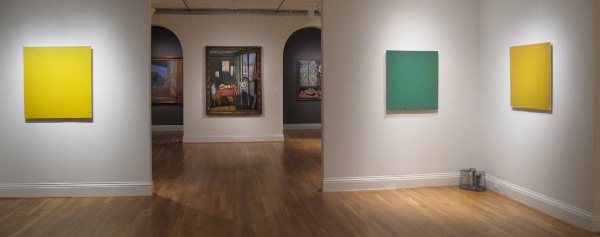
Henri Matisse, Studio, Quai Saint-Michel, 1916. Oil on canvas, 58 1/4 x 46 in. The Phillips Collection, Washington, D.C. Acquired 1940.
As mentioned in an earlier post, during my trip abroad I visited the Centre Pompidou to see the recently closed exhibition Matisse: Pairs and Sets. The show included the Phillips’s Interior with Egyptian Curtain; my photo below taken in the bookshop shows how editors at Dossier de l’Art hors-série decided to put it on the cover of their exhibition feature!
Though Studio, Quai Saint-Michel (1916), another Matisse in The Phillips Collection, wasn’t included in the exhibition, the display shed new light on that painting for me. The orange curtain on the far right of the picture has always beckoned me, saying: “Open me and come look out the window.” And thanks to this exhibition, I was finally able to see the Seine and the view of Notre Dame that Matisse enjoyed when working at his studio through a painting owned by a Swiss museum as well as one owned by MoMA.
I also loved discovering the other objects Matisse placed on a table that you see near the center of the Phillips’s picture. The exhibition included two paintings in which the artist had replaced the tray and glass with a plant and goldfish. An example from the Centre Pompidou even has a similar view through the window as the Phillips’s Studio Quai, Saint-Michel.






